View in gallery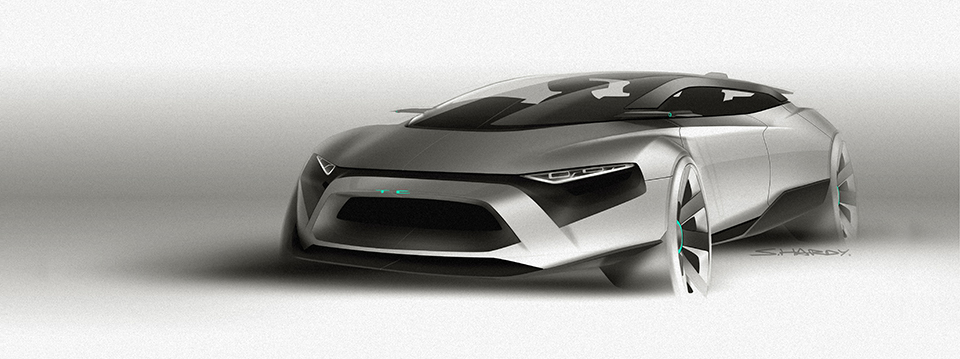
We’re in the middle of a transformational moment for the automobile. There’s a century of gasoline-burning, hand-on-the-wheel vehicles in our rear-view, while the road ahead is powered by electric, driverless technologies. Somewhere between yesterday and tomorrow, however, is the vehicle that bridges this gap, and its spirit can be seen in the concept cars, TED Talks and patent filings of today.
What will the car of the future look like? We set out to find out, documenting 10 trends in car design and technology along the way. To give these trends a face, we collaborated with French transportation designer Sydney Hardy, a student of car design with an eye for futurism. Sydney fused these trends into a single vision with a car we’re referring to as Link, a vehicle that bridges the gap between the road ahead and our history in the rear view.
This story is brought to you by vapor-distilled smartwater, who found unique inspiration for their water by looking up to the sky. We hope the change in perspective this piece offers will help inspire you.
Designing the Car of the Future: Exterior Design and Technology
View in gallery
The car of the future should have a little something for everyone. It should be compact enough for city driving, but spacious enough for a family of four to sit comfortably inside. It should be sporty, yet efficient, and designed in a manner that attracts drivers of different age groups, genders and personalities. We envisioned a car that wasn’t just transformational, but accessible. Link was created to be the kind of vehicle every driver could take pride in driving.
Link is a 5-door vehicle that is somewhere between a crossover and a sportback. It’s lower to the ground than a typical crossover, and it’s wider and more spacious than a sportback. While rear hatch designs have carried a stigma in the past, it’s included here in a stylish, functional manner to increase interior space and allow for a bit of hauling as needed. It allows Link to be both compact and spacious, a set of elements that are central to its design.
1. Technology Trend: Plug-in Electric / Diesel Hybrid
There’s a problem among wholly electric vehicles that engineers are still working to solve: battery capacity and charge times keep drivers within a limited driving range. Some solutions are in the works, but they remain several technological generations away. A widely-accessible, affordable solution isn’t likely to be available in 2020, but there is a vast network of diesel fuel pumps available to distance drivers.
Link is powered by a plug-in electric and turbodiesel drivetrain, the former providing 300+ miles per charge and the latter facilitating high-efficiency driving on longer trips. Manufacturers like Tesla, who have opened their patents to use by other car companies, will work to increase battery capacity amongst the generation of vehicles available in 2020. Meanwhile, car companies like BMW, Mercedes, Audi and others have emphasized diesel as a high-efficiency fuel for freeway driving. The BMW 328d for example averages about 45 mpg on the highway, and we expect this to increase as engine technology and fuel quality increases toward 2020.
A combination plug-in electric and turbodiesel hybrid is a new concept, one recently announced by both Volvo and Subaru for forthcoming vehicles. It’s sensible and sustainable, offering an electric option for local driving and an efficient diesel backup for longer trips. By 2020, advances in algae biodiesel and other advanced alternative fuels could make diesel driving the best option for legacy combustion engine vehicles. While most drives wouldn’t require the diesel backup, Link drivers can rest easy knowing that the fuel they use in those instances is clean and efficient compared to 88 octane gasoline.
2. Design Trend: Broad, Low and Lightweight
View in gallery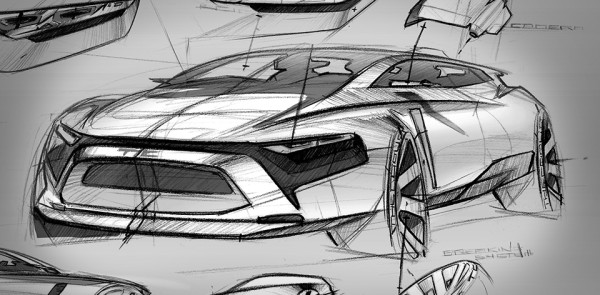
In recent years, manufacturers have worked to improve performance and efficiency by cutting curb weight to improve power-to-weight ratios. Others have focused on lower, wider and longer body shapes to improve aerodynamics, interior space and visual appeal. In Link, we’ve emphasized all three, designing a broad, low and lightweight body for performance, comfort and efficiency. The broad shape improves interior space, the low ride height improves aerodynamic performance and the emphasis on lightweight construction improves the drivetrain’s power and efficiency.
These points of emphasis are not new — they represent a growing trend in automotive design. We visited our friends at Cadillac at the Detroit Auto Show for the reveal of the 2015 Cadillac ATS Coupe, and they strongly emphasized their design focus of “longer, lower, leaner”. For parallel-parking urban drivers, we avoided an overly long design, but the focus here is a common cause for forward-thinking car companies.
3. Design Trend – Panoramic Roof
View in gallery
A common element in recent concept car designs has been panoramic roofs, roofs with expanded sunroof panels or windows that expand onto the roofline. We played with the idea of a panoramic roofline for Link, as shown in the early sketch above. Using current consumer options, such a roof line would be impossible, since rollover crashes and other impacts would make this option a serious safety hazard. In recent years, however, glass technologies have evolved quickly. Driven largely by mobile phone and tablet computer demands, glass and high-impact plastics have been designed to handle heavy use, shocks and impacts without failing under the stress. The panoramic roof of Link will include state of the art glass technology that will allow for extended visual access above the passenger cabin. Its support comes from the doors and a central column that expands into the center (translucent supports shield the car in case of a rollover). It’s designed to be shatter-proof, much like Apple’s latest iPad, so it’ll absorb impact like any other body panel.
4. Design Trend – Double Doors
View in gallery
A compact size is essential to this design, but that doesn’t mean its driver should give up the functionality of a four door. Link has the shape of a coupe but the full functionality of a five door vehicle, thanks in part to its swing-out double doors. Recent city cars like the all-electric BMW i3 and the Honda Element featured similar swing-out double doors. This gives Link four-door access without taking up the body space and additional weight of a traditional four-door vehicle. It’s becoming increasingly commonplace in the concept car circuit, and something we expect to see more of by 2020.
5. Design Trend – High Efficiency, Aggressive Headlights
View in gallery
An aggressive headlight design is the mark of a well-designed sports car. Some brands like Audi have connected this trend with an emphasis on efficient, high-output lighting technology. Link shares these traits, with an aggressive set of headlights that use high-efficiency LEDs that provide as much output as they do attitude. While traditional headlights help consume a good amount of fuel on long trips, lights like these sip power while providing a necessary amount of light for safe evening travels.
6. Technology Trend – Regenerative Braking
View in gallery
Braking expends a lot of kinetic energy, as thousands of pounds in momentum are brought to a standing stop. In the past, engineers have discovered ways of harvesting this kinetic energy and storing it for reuse. This technology is called regenerative braking, and it has been used in trains, pedal assist bicycles and some cars for many years. Today, only a few electric cars use this, including all Tesla models, but it has yet to be widely implemented. Link is designed to feature regenerative braking, reflecting a belief that such technology will be commonplace in the electric vehicles of 2020.
7. Technology Trend – Exterior Camera/Sensor Array
View in gallery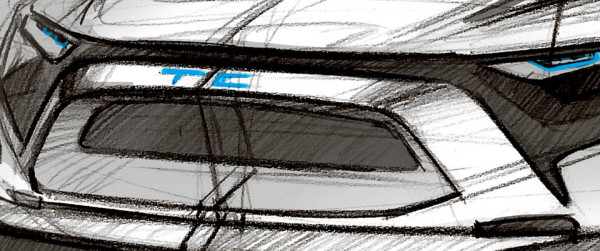
Driverless cars cannot operate on software alone. An array of exterior cameras and sensors are necessary to provide the car’s computer with the information it needs for automated driving. Such technological evolutions are far from science fiction — they are being designed and built into forthcoming vehicles now to be ready for future software systems.
We mentioned the 2015 Cadillac ATS Coupe above, and it features this trend too.
Cars like the ATS Coupe and the Mercedes Benz S550 both feature a complicated array of cameras and sensors which provide roadway awareness for the driver, and even some automated driving capabilities. For Link to be compatible with evolving driverless software, it features an array of cameras mounted in the grille, the side mirrors and the rear end to capture information about the road from every viewing angle.
Designing the Car of the Future: Interior Technology
View in gallery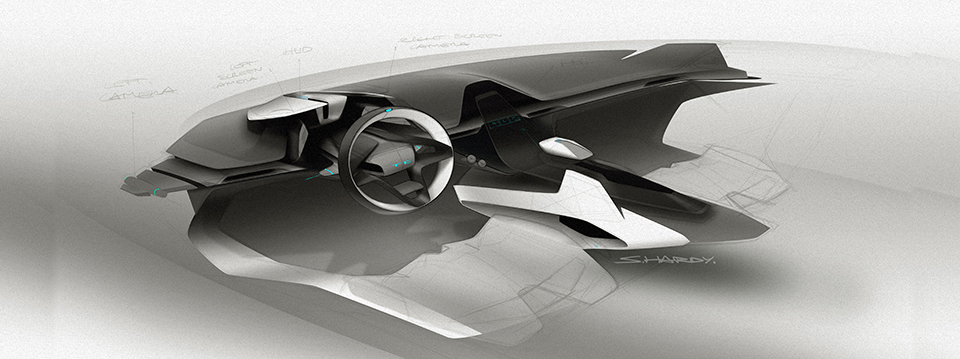
8. Technology Trend – Heads-Up Display Windshield
The visual real estate on the interior of the windshield is a prime location for information display. With Heads-Up-Display (HUD) technology, a driver can see information about the car and the environment around them without taking their eyes off the road. Everything from speed to navigation to safety alerts can be shown on the windshield to inform the driver in the safest way possible.
This isn’t distant-future technology — there are systems in place today to provide such information. However, as vehicles become more automated to the point of being fully driverless, HUD technologies will become more useful. Link is designed to feature a HUD system for both active driving and passive, driverless settings. It can be turned off completely for traditional motoring, switched on for driving assist (with navigation and safety information on screen) or entirely automated with a full set of screens and apps. To keep the passenger safe during driverless modes, Link’s HUD goes transparent as soon as the driver touches the wheel.
9. Technology Trend – Voice-Activated Car OS
This year, Apple revealed CarPlay for next-gen car operating systems. CarPlay brings Siri to the automobile, providing a voice-activated speech-and-response system for controlling the car’s media and navigational environment. By 2020, such systems will be designed to do more heavy lifting. In the case of Link, voice-activated systems will control most of the car’s functionality. A driver will have verbal control of the vehicle for all non-basic functions. When driving, commands such as “hold speed at 55” will suffice for cruise control, “brights please” will activate high beams, and, in driverless mode, a passenger can speak an address and the car will navigate to that spot under its own control. Basic media and navigation systems can already be controlled by voice, but by 2020, some cars will be navigable and functionally controlled by voice.
10. Technology Trend – Fully Driverless Automation Technology
Driverless technology is closer than most of us realize. In fact, many vehicles that are available today have drive-assist systems built in. Far beyond cruise control, some current commercially-available consumer vehicles can maintain set speeds, stay between highway lines and brake at the pace of other cars. Many manufacturers are already building sensor arrays and cameras into their vehicles for the 2015 model year. By 2020, such sensor arrays might be standard for the majority of new vehicles produces in the US. In the near future, driverless systems could be pure software technologies that use a hardware standard shared between manufacturers that grow and evolve by version just like today’s mobile operating systems.
Link is designed to be “driverless-ready”, featuring the camera and sensor arrays that will be necessary for driverless systems. Yet the interior is not designed for the “driver” to turn his or her back to the road. Cars in the distant future may be built without traditional windshields and steering wheels. Link, however, is the car of the future that bridges the gap between this generation and the next. It’s designed to allow its driver and passengers to have a traditional driving experience with all of the functionality necessary for driverless transit. Its driver can tune out for a long commute, but take the wheel in a moments notice should they want to take over.
View in gallery
What do you hope to see in the car of the future? These 10 trends represent a clear shot toward the cars we might be driving in 2020. While driverless technologies and next gen powertrains will evolve quickly, we see a vehicle that will bridge the gap between our automotive past and our automated future. We call it Link, and we’d love to know how you’d shape the car of the future in your eyes.
This story is brought to you by vapor-distilled smartwater, who found unique inspiration for their water by looking up to the sky. we hope the change in perspective this piece offers will help inspire you.




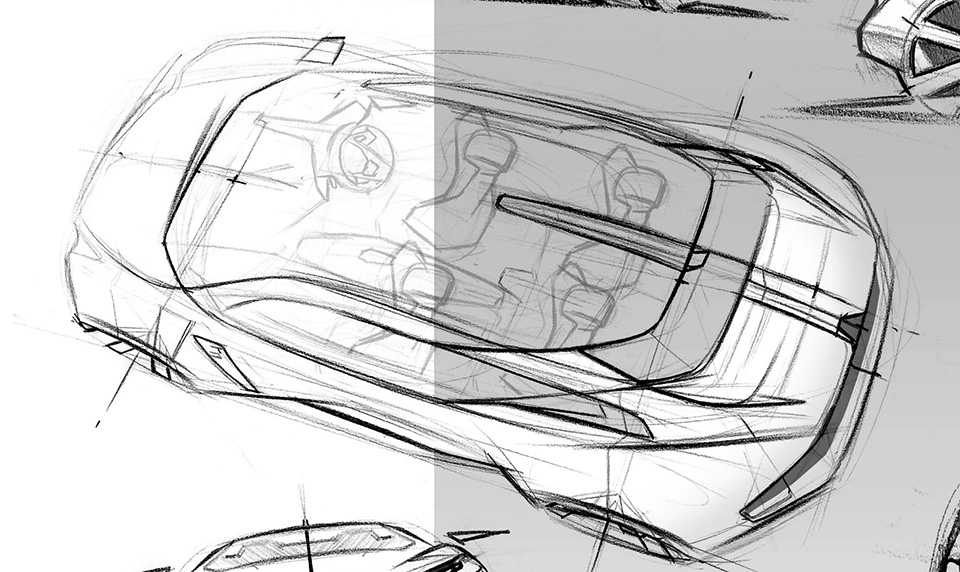

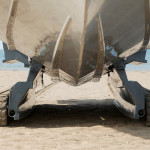
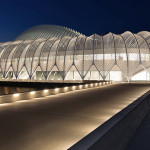



Tarron Estrada said it beautifully. Bravo!
I’m all for the future and taking the next step into the new century. But I truly do enjoy driving my traditional American muscle cars. Classic cars are simply a beautiful creation. To work on your car and to have a passion of being under the hood with a ratchet getting dirty. It’s truly something that is enjoyable to hundreds of thousand people across the world. Bring the future on! But please don’t take away the past with the future.
Interesting design conceptual inputs. Speaking as a retired auto designer, there is considerable merit in this content and well worth a read by those in the field and a most valuable primer for students in design college studies.
Very helpful :)
I totally agree about driverless parts. Auto pilot and manual drive should be coexist. Driving is a kind of pleasure for past generation.